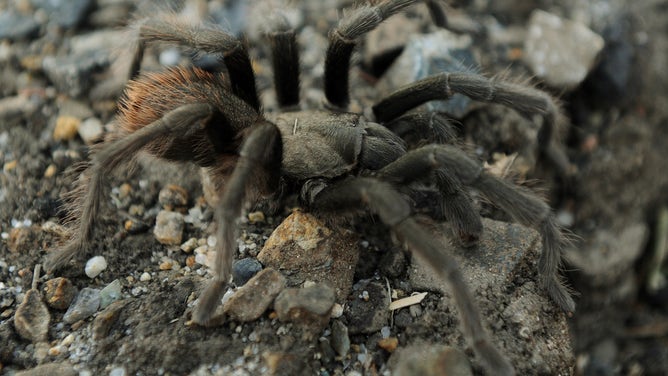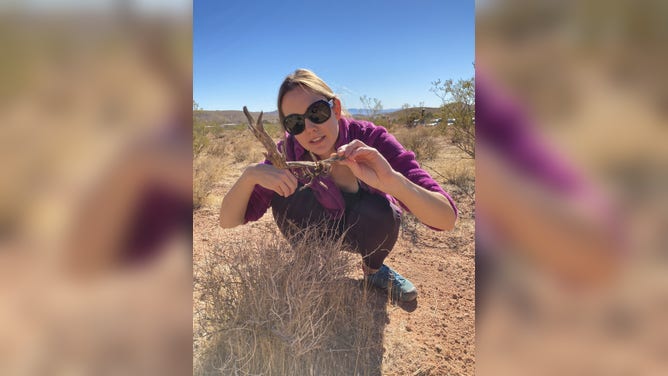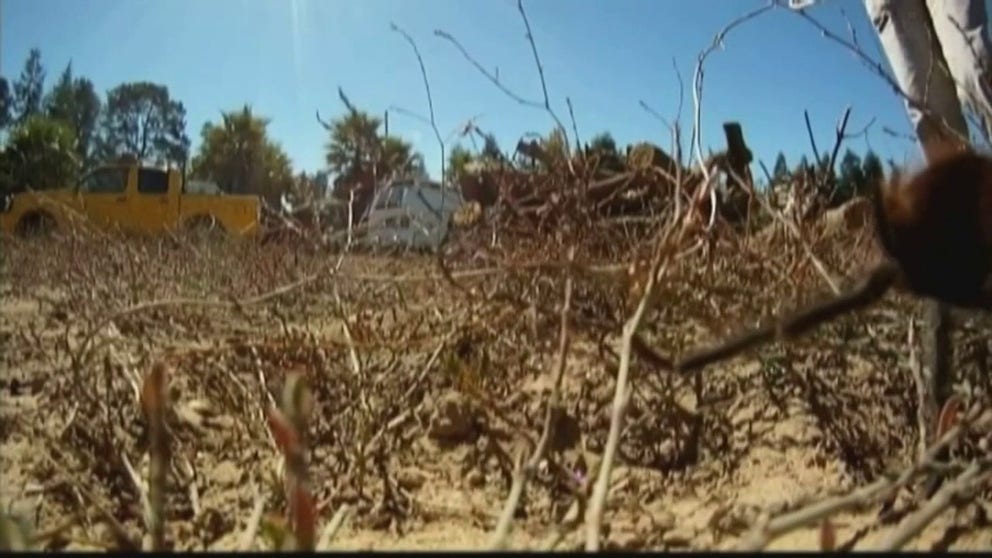Just in time for Halloween: Tarantulas on the march
The tarantula migration is the ultimate quest for love.
Every Fall when desert temperatures cool off just enough, the male tarantula sets out to mate during the annual tarantula migration. Texas sees the march for love as early as August while the Four Corners area experiences it in September. Check them out quickly though because the migration is over when near-freezing temperatures set in come November.
A Tarantula walks on a road at the Sequoia National Park in California.
(MARK RALSTON/AFP via Getty Images / Getty Images)
Male tarantulas leave the nest at the age of three in search of love across the desert and grasslands in the Southwest.
So many visitors return each year to La Junta, CO the town devoted an entire section of their website to the event. The largest tarantula migration in the world is in Gabbs, NV – guess what the high school mascot is… A Nevada Department of Transportation contractor remembers driving to Gabbs, "…getting to town on State Route 361 from US 50 and running across thousands of tarantulas crossing the highway, leaving the surface a slick mess of dead spiders."
Myranda Bair goes hiking outside of Las Vegas every year just to see the tarantulas en masse. She posed with furry friend just last week.
The females can live up to 20 years and stay in their underground bunkers until the right guy comes along. Ladies also eat rejected suitors and sometimes even the right guy which is why it is not a surprise that males only live to 3 or 4. For mating, the men will walk up to 50 miles dodging cars and bird beaks, even risking death from exposure to the heat or cold.
As long as it’s Halloween let’s talk about some other creepy tarantula details.
We know about the eight eyes, 8 legs, and the exoskeleton. They have fangs that inject venom into their prey which liquefies their insides, so the arachnid can suck it out for meals. Tarantulas use their hairs to feel vibrations from prey and then actually chase the prey.
The venom is not harmful to humans. A Nevada Department of Wildlife Educator compares a bite to a painful bee sting. She says that the Tarantula was named for a town in Italy, Taranto where residents did a dance called the Tarantella to take the sting out of a local spider bite.
Tarantulas can also rub their abdomen to fling barbed hair – which is an irritant to human skin.
A little creepier is the Tarantula’s predator, a wasp called a tarantula hawk. The wasp stings to paralyze the spider then lays eggs and the spider’s body so wasp larvae have a living meal when hatched.
Unfortunately for the male tarantula, the quest for love is not a lucky one. Lucky for us that we get to watch this dating pursuit every year.


